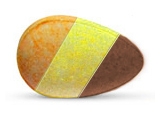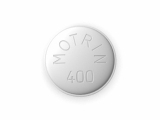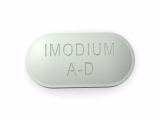How erectile dysfunction drugs work
Erectile dysfunction is a widespread condition among men and can drastically reduce their quality of life. Fortunately, there are effective medications available that can help improve this condition. It is essential to understand the mechanisms of action behind these medications to appreciate how they work and how to use them safely.
One of the most well-known medications for treating erectile dysfunction is sildenafil, marketed under the trade name Viagra. Sildenafil acts by inhibiting the phosphodiesterase type 5 (PDE5) enzyme, which is responsible for breaking down a molecule called cyclic guanosine monophosphate (cGMP). By inhibiting PDE5, sildenafil allows cGMP levels to build up, causing the smooth muscle in the penis to relax and allowing increased blood flow, resulting in an erection.
Other medications that work in a similar way to sildenafil include tadalafil (Cialis) and vardenafil (Levitra). They can be used to treat erectile dysfunction of varying severity and can last for several hours after administration.
It is essential to carefully consider the potential risks and benefits of erectile dysfunction medications before using them. Some common side effects include headache, indigestion, and facial flushing. In rare cases, serious side effects such as sudden vision loss and hearing loss have been reported. It is always recommended to speak with a healthcare provider before starting any new medication for erectile dysfunction.
The Importance of Erectile Function
Sexual Health
Erectile function is a key aspect of sexual health. For many men, the ability to achieve and maintain an erection is a fundamental part of their sexual identity and a crucial component of their sexual relationships.
Loss of erectile function can lead to a decrease in sexual desire, arousal, and satisfaction, as well as reduced self-esteem and confidence. This can have a profound impact on a man's overall quality of life and relationships.
Physical Health
Erectile function is also important for physical health. It is often seen as an indicator of vascular health and can be a sign of underlying medical conditions such as cardiovascular disease, diabetes, and hypertension.
Research has shown that men with erectile dysfunction are at an increased risk for heart disease, stroke, and other serious health complications. Maintaining erectile function through medication and lifestyle changes can help improve overall physical health and reduce the risk of these conditions.
Mental Health
Erectile function can also impact mental health. Men with erectile dysfunction often experience feelings of anxiety, depression, and stress, which can have a negative impact on their mental wellbeing and quality of life.
Treating erectile dysfunction can help reduce these feelings and improve mental health outcomes. By improving erectile function, men can experience a boost in self-confidence, mood, and overall mental wellbeing.
Erectile Dysfunction: Causes and Symptoms
Causes
Erectile dysfunction (ED) can be caused by a variety of factors. One of the most common causes is poor blood flow to the penis, which can be caused by diabetes, high blood pressure, or heart disease. Hormonal imbalances, nerve damage, and medication side effects can also contribute to ED. Smoking and excessive alcohol consumption have also been linked to the development of ED.
Psychological factors, such as stress, anxiety, and depression, can also play a role in the development of ED. Relationship problems, lack of confidence, and a negative body image can all impact sexual performance. In some cases, a combination of physical and psychological factors can lead to ED.
Symptoms
The primary symptom of ED is the inability to achieve or maintain an erection during sexual activity. This can include difficulty getting an erection, a soft erection, or premature ejaculation. Men who experience these symptoms on a regular basis should speak with a healthcare provider to determine the underlying cause and explore treatment options.
Other symptoms of ED may include decreased sexual desire, low self-esteem, and anxiety about sexual performance. ED can also have a negative impact on relationships and quality of life. Men experiencing these symptoms should seek medical attention to address the issue and improve their overall sexual health.
Types of Erectile Dysfunction Medications
Phosphodiesterase type 5 inhibitors (PDE5 inhibitors)
These medications are the most commonly prescribed and effective treatment for erectile dysfunction. They work by inhibiting the enzyme phosphodiesterase type 5, which leads to increased blood flow to the penis during sexual stimulation. This results in an improved ability to achieve and maintain an erection. Popular PDE5 inhibitors include sildenafil (Viagra), tadalafil (Cialis), and vardenafil (Levitra).
Alprostadil
Alprostadil is a medication that is injected directly into the penis or inserted into the urethral opening. It is a synthetic version of prostaglandin E1, which helps to dilate blood vessels and improve blood flow to the penis. This medication can be effective for men who do not respond to PDE5 inhibitors or cannot take them due to certain medical conditions.
Testosterone replacement therapy
Lack of testosterone can also contribute to erectile dysfunction in some men. Testosterone replacement therapy involves taking a medication that supplements the body's natural testosterone levels. This can be administered in the form of injections, patches, gels, or oral tablets.
Penis pumps
Penis pumps are devices that create a vacuum around the penis, leading to increased blood flow and the ability to achieve an erection. They are typically used in combination with other treatments and may be recommended for men who cannot take medication or prefer a non-invasive option.
Surgical implants
In some cases, surgical implants may be recommended for men with erectile dysfunction who do not respond to other forms of treatment. These implants involve inserting a prosthetic device into the penis to create an erection when desired. There are several different types of implants available, including malleable rods, inflatable devices, and self-contained units.
- PDE5 inhibitors are the most commonly prescribed and effective treatment for erectile dysfunction
- Alprostadil can be effective for men who do not respond to PDE5 inhibitors or cannot take them due to certain medical conditions
- Testosterone replacement therapy supplements the body's natural testosterone levels
- Penis pumps can be used in combination with other treatments and may be recommended for men who cannot take medication or prefer a non-invasive option
- Surgical implants may be recommended for men with erectile dysfunction who do not respond to other forms of treatment
Phosphodiesterase Type 5 (PDE5) Inhibitors
Introduction
Phosphodiesterase type 5 (PDE5) inhibitors are a class of medications that are used to treat erectile dysfunction (ED). They work by increasing blood flow to the penis, resulting in firmer and longer-lasting erections. PDE5 inhibitors are the most commonly prescribed medications for ED, with three drugs currently available: sildenafil, tadalafil, and vardenafil.
Mechanism of Action
PDE5 inhibitors work by blocking the action of PDE5, an enzyme that breaks down cyclic guanosine monophosphate (cGMP), a molecule that dilates blood vessels and increases blood flow to the penis. By inhibiting PDE5, these drugs increase cGMP levels, which leads to relaxation of smooth muscles in the penile arteries and increased blood flow to the penis. This mechanism of action is similar for all three drugs, but there are some differences in their duration of action and side effect profiles.
Side Effects
PDE5 inhibitors are generally well-tolerated, but like all medications, they can have side effects. The most common side effects include headache, flushing, and nasal congestion. These side effects are usually mild and go away on their own. Less common side effects may include changes in vision or hearing, dizziness, and stomach upset. In rare cases, PDE5 inhibitors can cause priapism, a painful erection that lasts for more than four hours and requires medical attention.
Conclusion
Phosphodiesterase type 5 (PDE5) inhibitors are a safe and effective treatment for erectile dysfunction. They work by increasing blood flow to the penis, resulting in firmer and longer-lasting erections. These drugs are generally well-tolerated, but like all medications, they can have side effects. If you experience any side effects while taking PDE5 inhibitors, talk to your doctor.
Intracavernosal Injections
Overview
Intracavernosal injections (ICIs) are a form of therapy used in the treatment of erectile dysfunction (ED) when oral medications are not effective or contraindicated. This method involves injecting a vasodilator drug directly into the corpus cavernosum of the penis to produce an erection.
Administration
Injection sites include the base of the penis or the side, depending on the individual's anatomy. Patients are usually instructed to inject themselves using a fine needle and syringe, with dosages adjusted according to response and side effects. The onset of erection is usually within 10 to 20 minutes of the injection and can last for up to an hour.
Side Effects
Side effects of ICIs can include pain, bruising, and bleeding at the injection site, prolonged erections (priapism), and fibrosis of the tissue in the corpora cavernosa. Patients should receive instruction on proper injection technique and potential side effects to minimize the risk of complications.
Effectiveness
Intracavernosal injections have a high success rate (greater than 80%) in producing erections suitable for sexual intercourse. The drugs used in ICIs include prostaglandin E1, papaverine, and phentolamine, alone or in combination. This method is also effective in men who have had nerve-sparing prostatectomies or other pelvic surgeries that affect erectile function.
Conclusion
Intracavernosal injections are a safe and effective treatment for ED in patients who are unable to achieve satisfactory erections with oral medications. While there are potential risks associated with this method, proper instruction and monitoring can minimize the risk of complications.
Vacuum Constriction Devices
What are Vacuum Constriction Devices?
Vacuum constriction devices, also known as vacuum erection devices (VED), are designed to help men with erectile dysfunction (ED) achieve and maintain an erection. It consists of a plastic tube that is placed over the penis, a pump that creates a vacuum within the tube, and a constriction ring that is placed around the base of the penis after erection is achieved.
How do Vacuum Constriction Devices Work?
The vacuum created by the pump within the tube draws blood into the penis, causing it to become erect. The constriction ring is then placed around the base of the penis, which helps maintain the erection by restricting blood flow out of the penis. This allows the user to maintain an erection long enough for sexual intercourse.
Are there Any Risks or Side Effects?
While vacuum constriction devices can be effective in treating ED, they do carry some risks and potential side effects. These include penile pain, numbness, and bruising, as well as difficulty ejaculating. In rare cases, they can also cause a sustained and painful erection known as priapism.
Conclusion
Overall, vacuum constriction devices are a safe and effective treatment option for men with ED who do not want to or cannot use oral medications. However, it is important to consult with a healthcare provider before using one to ensure that it is the right choice for you and that you are using it correctly to minimize the risk of side effects.
Follow us on Twitter @Pharmaceuticals #Pharmacy
Subscribe on YouTube @PharmaceuticalsYouTube





Be the first to comment on "How erectile dysfunction drugs work"